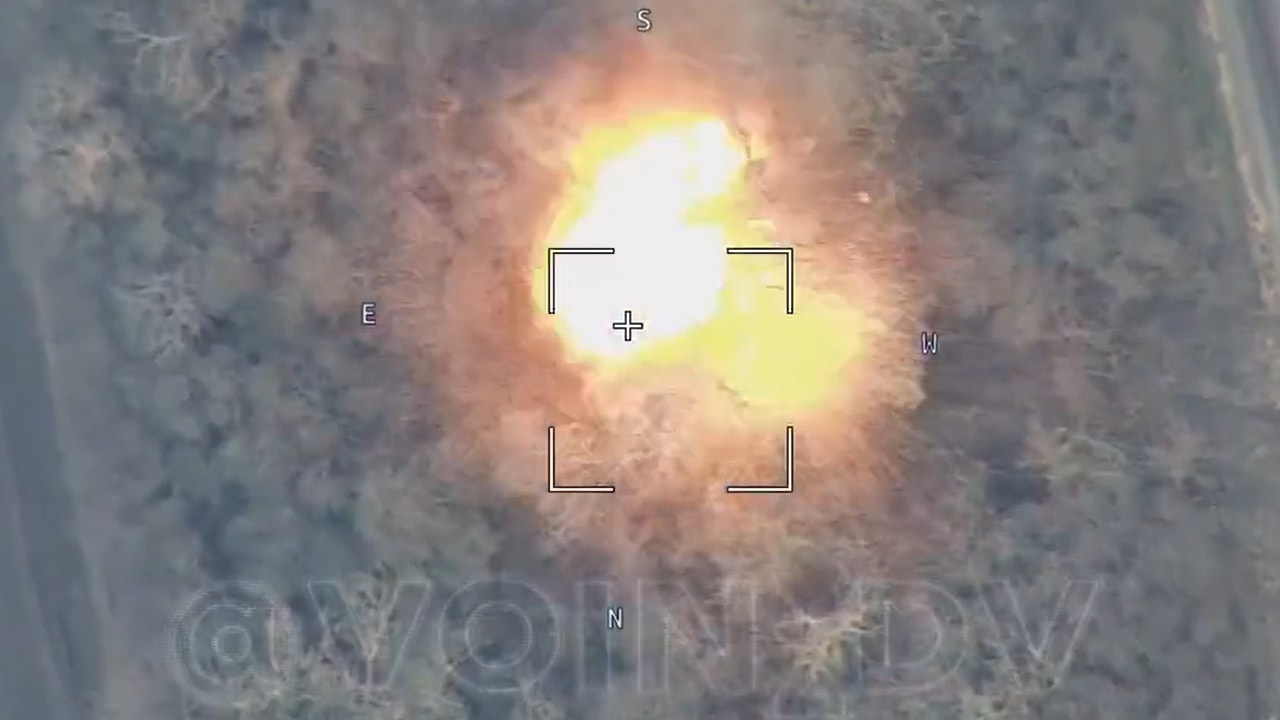Among the strongest reasons for Ukraine’s survival against the Russian onslaught has been the embattled country’s high-functioning air defense systems.
These systems have been crucial in protecting both civilian and military objectives.
But a recent video out of Ukraine also shows the vulnerability of such air defense systems and points to Russia’s potential to wipe them out with targeted strikes.
Multi-Functional Ukrainian Radar System Footage Raises Questions
The war-watcher account Ukraine Weapons Tracker tweeted footage from a Russian Telegram channel, which appears to show a successful strike on a Ukrainian radar installation.
Of course, 19FortyFive cannot confirm the authenticity of the footage. However, Russian military experts we asked said that as best as they can tell, it looks authentic.
The drone footage zooms in to show Russian loitering munitions targeting the facility, after which time smoke rises and figures are seen running away from the building.
Loitering munitions are many times referred to as ‘Kamikaze’ drones.
Questions remain about whether the installation was actually incapacitated, or whether the footage was misleading, but the vulnerability the video is pointing to is certainly real.
“A Ukrainian TRML-4D multi-functional radar from the IRIS-T SLM air defense system was taken out of action by a Russian Lancet loitering munition.”
How Strong Are Ukraine’s Air Defenses?
As David Rising and Hannah Arhirova reported for AP, Ukraine’s air defenses have considerably improved since the start of the war.
“With the help of Western weapons and growing experience, Ukraine’s air defenses have made great strides in the past 14 months, saving infrastructure and lives and preventing Russia from achieving air superiority,” Rising and Arhirova note.
These defenses have kept Russian fighter jets from penetrating far into Kyiv-held territory and stopped the vast majority of Kremlin drones and missiles from striking their intended targets. Two U.S.-made Patriot missile defense batteries have greatly aided Ukraine, bringing missile interception rates from around 50 percent early in the war to current rates of around 90 percent, according to Ukrainian sources on the ground.
Ukraine has relied particularly on missile defense systems from Soviet days including the S-300 and Buk defenses. Still, Ukraine has begun transitioning into systems such as the German-made IRIS-T such as those shown in the video. European and American NASAM batteries (National Advanced Surface-to-Air Missile systems) have also greatly aided Ukraine’s defense of its skies.
Berdyansk Is Burning…
War-watching account OSINT (Uri) also recently tweeted footage that has prompted questions. The footage is shot from a parking lot full of vans and shows a large fire burning nearby as helicopters can be heard circling above.
“Why is Russian-occupied Berdyansk on fire again with helicopters flying around?”
#Ukraine: A Ukrainian TRML-4D multi-functional radar from the IRIS-T SLM air defense system was taken out of action by a Russian Lancet loitering munition. pic.twitter.com/OX7RocZXbM
— ???????? Ukraine Weapons Tracker (@UAWeapons) June 7, 2023
Paul Brian is an author and freelance journalist who has reported for Reuters, BBC and Foreign Policy, and contributed to the Spectator, the Federalist and the American Conservative. He has covered global events from Europe, the former Soviet Union and the Middle East to South America.
From 19FortyFive
Ukraine Footage Shows U.S. M982 ‘Excalibur’ Cut Through Russian Artillery
How To Sink A $3 Billion Dollar Submarine: Leave A Hatch Open
Smashed To Pieces: Video Shows Ukraine Hitting Russian Air Defenses

